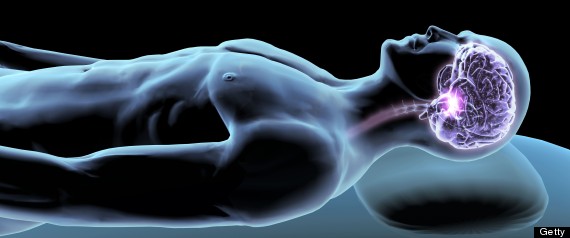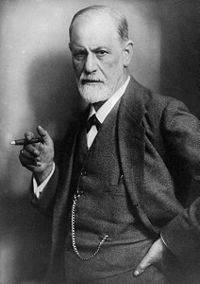Tagged: Sleep
New Study Shows Lack of Sleep Leads to Permanent Brain Damage
 We all know that sleep is one of the best ways to restore our body. For example, when we become sick, we just lie in bed and sleep all day; or after a long day bustling between class, the gym, meetings, and extracurricular activities, our body yearns to fall into a deep slumber to restore itself to its peak state. Recently, it was published that the reason sleep is so restorative is because while we sleep, cerebrospinal fluid flows more efficiently through the brain, essentially “clearing” the brain of any metabolic waste products that build up during the day (for more on this, refer to the December 9th blog post). However, just as we all understand that great feeling of satisfaction that comes after the so rarely obtained 8-9 hour sleep cycle (yes, young college-aged adults should ideally be getting 8-9 hours of sleep a night), we also can all relate to the groggy, confused, cognitively impaired state that comes after the all-night cramming and three hours of sleep, and before the double espresso from Starbucks. Until recently, this chronic state of unrest considered normal by college students, shift workers, and truck drivers, wasn’t thought to have any long lasting damage; it was considered common knowledge that catching up on sleep during weekends or vacations made up for the hours of sleep lost during finals week. However, a new study published on March 18th in the Journal of Neuroscience refutes this; the study, out of University of Pennsylvania’s Perelman School of Medicine, shows that chronic sleep loss may be much more destructive than previously thought, leading to permanent cell damage and neuronal death.
We all know that sleep is one of the best ways to restore our body. For example, when we become sick, we just lie in bed and sleep all day; or after a long day bustling between class, the gym, meetings, and extracurricular activities, our body yearns to fall into a deep slumber to restore itself to its peak state. Recently, it was published that the reason sleep is so restorative is because while we sleep, cerebrospinal fluid flows more efficiently through the brain, essentially “clearing” the brain of any metabolic waste products that build up during the day (for more on this, refer to the December 9th blog post). However, just as we all understand that great feeling of satisfaction that comes after the so rarely obtained 8-9 hour sleep cycle (yes, young college-aged adults should ideally be getting 8-9 hours of sleep a night), we also can all relate to the groggy, confused, cognitively impaired state that comes after the all-night cramming and three hours of sleep, and before the double espresso from Starbucks. Until recently, this chronic state of unrest considered normal by college students, shift workers, and truck drivers, wasn’t thought to have any long lasting damage; it was considered common knowledge that catching up on sleep during weekends or vacations made up for the hours of sleep lost during finals week. However, a new study published on March 18th in the Journal of Neuroscience refutes this; the study, out of University of Pennsylvania’s Perelman School of Medicine, shows that chronic sleep loss may be much more destructive than previously thought, leading to permanent cell damage and neuronal death.
Why do we need sleep?

We know from everyday life that, at some point, we need to sleep. In fact, extended sleep deprivation can lead to death. Despite the amount of sleep research that has been conducted, none have been able to clearly reason out the essential function of sleep. However, recently, a promising study by Dr. Nedergaard showed that sleep functions in clearing neurotoxic waste from the brain of mice. In effect, without sleep, these toxins would build up and cause problems for the body.
Specifically, the study looked at what is known as the glymphatic system. Because our central nervous system lacks a lymphatic system which is in our peripheral system, the glymphatic clearance pathway is the primary way in which our brain can "clear" the cerebrospinal fluid (CSF) and interstital fluid (ISF) of the brain parenchyma. This clearance includes functions of getting rid of wastes, soluble proteins, and even controlling the volume of fluid. Interestingly, the Nedergaard study showed that this clearance system works faster when mice were asleep--in other words, the exchange rates of CSF and ISF increased during sleep. In addition, they were able to show that surrounding cells in the brain would shrink in size to allow more efficient clearance.
Hot Headed or Simply Tired?
We’ve all seen it happen, marveled at the constancy, and even blamed the friends around us for our own personal breathing. Does this sound strange? I am talking of course about contagious yawning; this is the phenomenon that seeing someone yawn will cause you to immediately do the same. But why, and for that matter, why even yawn in the first place? More
What the Freud is Up with Dreams?
Ranging from the Eastern Mediterranean in the 7th century, to China in the 16th century, and finally to Europe in the 17th century, dream interpretation has been viewed as a decryption of supernatural communications and symbolic messages. Sigmund Freud, the academically (in)famous founder of the field of psychoanalysis, whole-heartedly supported the hypothesis that dreams contain deeper meaning. He consequently produced one of the seminal works on the subject, quite obviously named, The Interpretation of Dreams. Today, revelatory and efficient techniques, such as MRI and EEG, have far surpassed Freud’s interpretive dream journal methods, and allow scientists to look at dreams from a very different perspective. Although these advancements lend more credibility to the field of oneirology, it is still somewhat tainted by its psychoanalytic past. Some even go as far to say that studying dreams is “academic suicide”. Nevertheless, modern neuroscience has forced Freud’s ideas to the background, making room for new theories of memory consolidation, experience organization, and emotional stabilization.
Since dreaming occurs while sleeping, it is no surprise that the sleep cycle, during which the brain experiences patterns of varying electrical activity, has been implicated in dream theories. Each cycle consists of five stages – two stages of light sleep, followed by two stages of deep sleep, and completed with a stage of rapid eye movement sleep (REM). Unfortunately, there is no representative electrical pattern associated with dreaming, but REM and non-REM sleep have both been connected to the brain’s analysis of waking experiences. Pierre Maquet at the University of Liege, Belgium, observed deep non-REM sleep and found that the brain’s electrical activity mimicked the electrical activity elicited during waking experiences.
Not only do we replay events in our dreams, but we also seem to process, integrate, and store the information for future use. Robert Stickgold of Harvard University found that those who had non-REM dreams about a task that they were asked to complete, proceeded to do better on it. Stickgold proposes that “non-REM dreaming might be more important for stabilizing and strengthening memories, while REM dreaming reorganizes the way a memory is stored in the brain, allowing you to compare and integrate a new experience with older ones”. On a different, albeit related note, daydreaming activates a part of the brain called the default network. This region has previously been shown to be associated with memory processing. Be sure to mention this to your professor next time you’re caught not paying attention in class.
Matt Walker of the University of California acknowledges that dreaming has an important role in memory, but argues that the main function is emotional homeostasis. Walker has found that REM sleep facilitates the strengthening of negative memories. He believes that experiencing the negative emotion in a dream state can diminish the intensity of the emotion, making it easier to deal with. In those with post-traumatic stress disorder, however, this process seems to fail. Boston University’s Patrick McNamara agrees with Walkers’ speculation. He believes that “non-REM dreams help us practice friendly encounters, while REM dreams help us to rehearse threats”.
While dreaming, the brain rewires itself and forms new connections. It seems that this curious kind of consciousness does not reveal our secret desires or open windows into our hidden selves, but instead plays an integral role in making us who we are. Sorry, Siggy.
To view the original article from New Scientist, click here!
Having Trouble Getting a Good Night's Sleep? There's an App for That.
Maciek Drejak Labs released an app earlier this year for the iPhone (which can also be used on the iPod Touch) called "Sleep Cycle." Recently, Lifehacker rated this App the best alarm clock application function for smart phones for its weekly Hive Five feature.
The way this application works is by monitoring your body movements during sleep. The user is instructed to place the phone face side down between the fitted sheet and the mattress. Over the course of the night, the program registers high amounts activity (movement) as "awake," moderate activity as "Dreaming" (REM sleep), and little to no activity as "Deep Sleep" (slow wave sleep). For the first two or three nights of use, Sleep Cycle familiarizes itself with the user's movement patterns by creating a graph of the user's sleep cycle.

Sample graph of a user's sleep cycle
At the peaks of the graph, the user is most likely at his or her lightest sleep. The user sets an alarm for what time he or she would like to wake up. Within the last thirty minutes of a night's sleep, Sleep Cycle will analyze the peaks of the graph and will attempt to wake the user gently when he or she is exhibiting a peak of high activity (ie: experiencing light sleep).
Customer reviews express some mixed results with this application, but overall, it appears that many people have positive experiences with Sleep Cycle. Some users report that when the application works properly, they feel wonderful when they wake up rather than being ripped out of deep sleep or a dream when the alarm goes off.
Although this application is only useful for iPhone and iPod Touch users, it is fairly inexpensive at 0.99 cents, and it has the potential to help extremely deep sleepers.
Sleep Cycle - Maciek Drejak Labs
Best Mobile Alarm App: Sleep Cycle - Lifehacker
